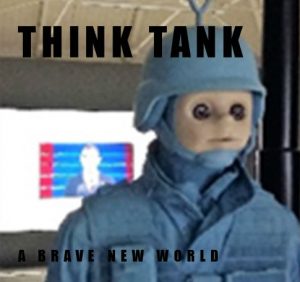Association News
Think Tank: Virtual Meetings in a Virtual Age?
March 22, 2017 - Association News
 Can we rely on virtual meetings in this virtual age? I don’t mean ones where virtually no-one shows up, but ones where everyone is participating at the same time, by teleconference or video conference!
Can we rely on virtual meetings in this virtual age? I don’t mean ones where virtually no-one shows up, but ones where everyone is participating at the same time, by teleconference or video conference!
Finding a date when most of your Directors can be in the same place at the one time is always a pain. And even when you’ve agreed a date there’s the venue, the travel, and the catering to be thought of. Plus, once you’ve got the Board together, If you’re unwise enough to give them a glass of wine with their buffet lunch you can pretty much kiss goodbye to a half-days’ productive time, if a couple of verbose windbags get into their stride.
So, banishing Directors to the confines of a small screen on the edge of your desk sounds pretty attractive. Not least because it has the potential to unlock heaps of time but it can also save a whole pile of money to boot! In the right circumstances virtual meetings can work admirably, but beware, there may be pitfalls.
Thanks to email it’s easy to get agreement to do something between meetings by simply asking committee members to reply signifying their consent. That’s fine, until one or two people don’t agree, raise major objections, or make counterproposals. Face to face this would get argued through and the majority view would probably prevail. But, if your discussion is solely by email, how – and who – determines whether a decision has been reached and what happens next? Clear ground rules should help.
A policy that requires over 50% of those responding to agree, or a minimum number of objections before something can be stopped, would do the trick. But what next? Wait until a subsequent meeting – virtual or real – to ratify that decision? Not much help if a rapid resolution is required! And what about keeping records? Electronic? Not much good if they’re only accessible from one person’s inbox! Better to make it a policy that such decisions are reported like Minutes?
For a couple of years I was on the Board of an international body whose Directors were scattered to the four corners of the globe (not physically possible, but you know what I mean!). Getting them together for more than one or two meetings a year would have been prohibitively expensive and massively time consuming, so most Board meetings were held by teleconference. With the CEO in Australia, the Chairman in America, and Directors in England, South Africa, India etc., meetings had be held at odd hours to allow for time differences. Occasionally a Director answered the phone in their pyjamas (funny place to have a phone), but it worked!
The key was planning, preparation, and active participation. The Officers having already deliberated, the Chairman and CEO set out and distributed an advance agenda that progressed in logical sequence; notes and supporting papers were circulated in advance, with all options explained; and all participants were expected to state their view clearly, with votes counted against the attendee list.
It worked because the group was tight, well known to each other, committed to attendance, and anxious to make progress. It would have failed if the Chairman had permitted subsequent backtracking on preceding decisions, let dominant personalities take over the discussion, or allowed the meeting to stray into subjects that were off beam. Their particular skill being to inspire input from those who never normally express an opinion on anything, or wrong-foot those who switched to speakerphone while they nipped off to fetch a coffee. Face to face, these same skills would be used to prompt those individuals whose ‘lights are on’ but where there’s ‘nobody home’!
Of course ‘actual’ meetings are better when it’s a large diverse gathering – like an AGM – or when there is a lot of business to cover on numerous issues. Slide decks and Power Point presentations can work in a virtual environment, but when you need 100% attention a live event is always best! But the major downside to virtual meetings is that they severely limit the chances of an after-meeting drink! Not the ‘done thing’ these days I know but, speaking personally, I learned an enormous amount about running trade associations, fellow directors’ true feelings, and the groundswell of member opinions, with a glass in my hand! Before the term got high-jacked, we used to call it ‘engagement’!
Michael Hoare
©2017 M J Hoare



